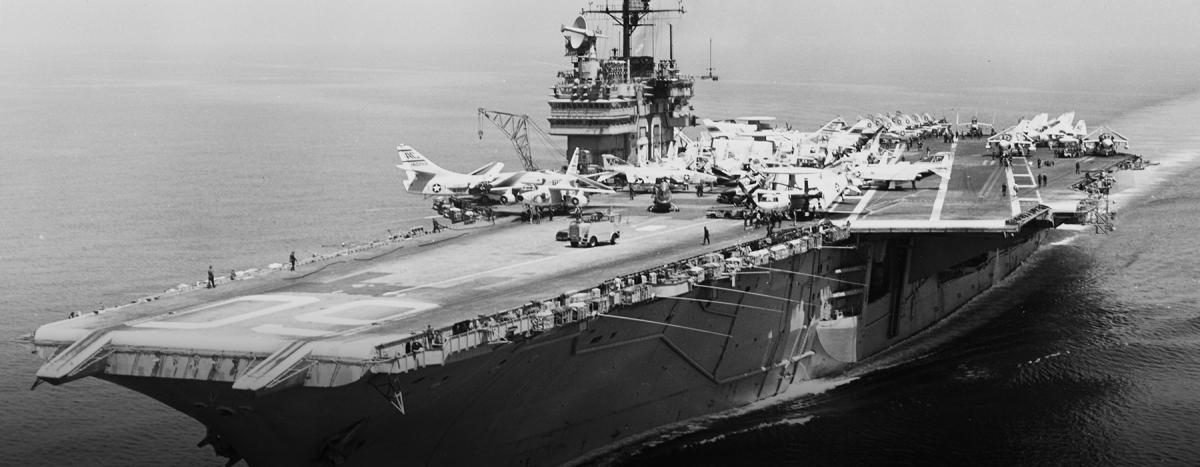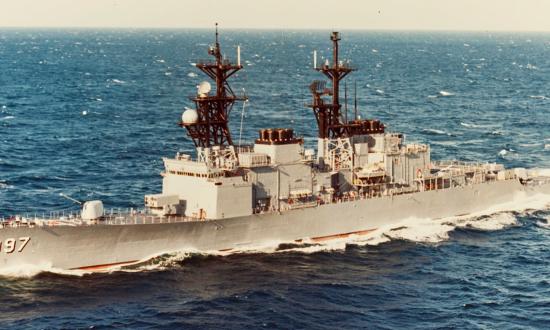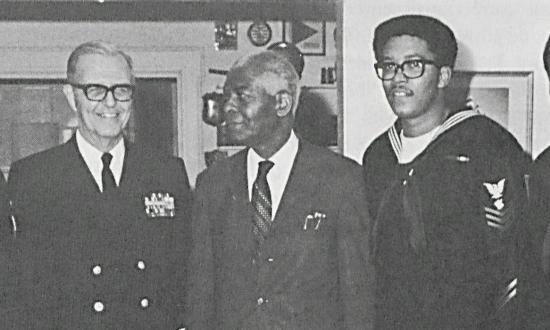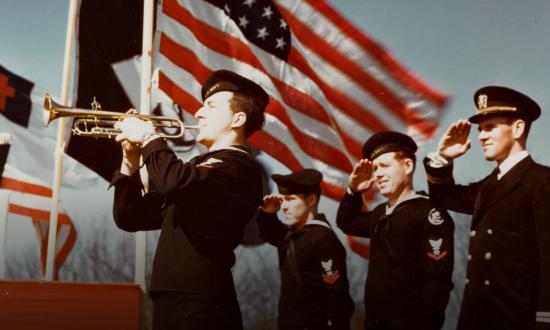March 1922 Proceedings—In “Germany is Converting Her Warships into Freighters,” Professional Notes Editor Lieutenant R. A. Hall, U.S. Navy, reported, “Under the terms of the Versailles Treaty, Germany was confronted with the necessity of finding some method of disposing of her war tonnage, and shipbuilders and naval architects immediately sought for ways and means of utilizing these ships for commercial purposes rather than to relegate them to the scrap heap. A practical solution was ultimately found; Several of these cruisers were placed in German shipyards and rebuilt into freighters, which are now doing service in such capacity.”
March 1972 Proceedings—In “The ‘CV’: Capable Vigilance or Continued Vulnerability,” Lieutenant James T. Coogan Jr., U.S. Naval Reserve, wrote, “In considering the submarine threat to the carrier, the cruise of the USS Saratoga (CVA-60) from June to November 1971 may serve as a possible model for providing an attack carrier with an internal [antisubmarine warfare] ASW capability, while retaining the basic strike option of the CVA. With an eye toward the increasing surface threat, the task of the Saratoga was to exercise the available aircraft mix in a simulated and real multi-threat environment . . . . The standard carrier airwing assets were modified to include augmented ASW forces.”
March 1997 Proceedings—In his “Included with the Sticker Price Interview,” Chief of Naval Operations Admiral Jay Johnson, U.S. Navy, said “We feel we have been preparing for the Quadrennial Defense Review since the end of the Cold War . . . . I don’t believe that the U.S. Navy needs to reinvent itself, and we don’t intend to. The number of ships we have, today 352, and the number of people we have, a little more than half a million, active and reserve—what they are asked to do every single day makes a compelling case for the relevance of naval forces forward.”
A. Denis Clift
Golden Life Member








